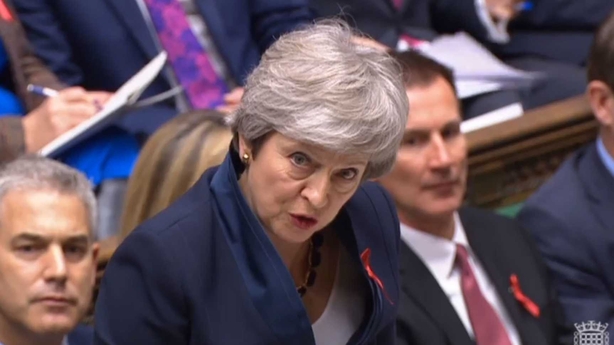The Bank of England warned that the pound would crash, inflation would soar and interest rates would have to rise in the event of a disorderly no-deal Brexit.
And an assessment by the British government found that Northern Ireland would be among the regions hardest hit by a no-deal Brexit or a Canada-style Free Trade Agreement.
The worst-case scenario analysis by the Bank of England warned that in the event of a disorderly no-deal, no-transition Brexit, Britain's GDP could fall by as much as 8% in the first quarter of 2019.
The unemployment rate would rise 7.5% and inflation would surge 6.5%, the bank said. House prices are forecast to decline 30%, while commercial property prices would be set to fall 48%.
The pound would also fall by 25% to less than parity against both the US dollar and the euro in this scenario, the bank found.
The government's Long-Term Economic Analysis found that the northeast of England, northwest and west midlands would also be badly affected in a no-deal or Canada-style scenario, while the pain would be more evenly spread under the scenario closest to Prime Minister Theresa May's deal, with London worst hit.
Withdrawal from the European Union under the British government's plans could cut the UK's GDP by up to 3.9% over the next 15 years, said the government's analysis.
But leaving without a deal could deliver a 9.3% hit to GDP over the same period, said the assessment. The UK would be poorer in economic terms under any version of Brexit, compared with staying in the EU, it found.
The government document did not put a cash figure on the potential impact on the economy, but independent experts have said that 3.9% of GDP would equate to around £100 billion a year by the 2030s, far outweighing the UK's current contribution to EU budgets.
The British government's paper found that government borrowing could be forced up by as much as £119 billion by 2035 if the UK quit the EU without a deal and up to £26.6 billion under a scenario similar to Prime Minister Theresa May's plans.
That 83-page document was drawn up by officials from a number of departments including the Treasury, the Department for Exiting the EU, Industry, Environment, International Trade and the Home Office.
It was released as Mrs May prepared to head to Scotland on the latest stage of a tour of all parts of the UK to promote her deal to voters ahead of the crucial House of Commons vote on 11 December.
Chancellor Philip Hammond acknowledged that all possible Brexit options will make Britain economically poorer, compared with remaining in the EU.
But he insisted that the PM's plan - agreed by EU leaders at a Brussels summit last Sunday - will "minimise" the economic damage.
In the House of Commons today, Mrs May said the analysis did not mean the country would be "poorer in the future than we are today".

She told MPs at Prime Minister's Questions: "What we have seen behind the analysis this morning is that our deal is the best deal available for jobs and our economy."
Labour leader Jeremy Corbyn, however, said the analysis was "meaningless" as there was no actual deal to model - just a "26-page wish list" in the Political Declaration.
The government analysis does not attempt precisely to forecast the impact of Mrs May's deal.
But it compares the likely impact of the proposals agreed by the Cabinet at Chequers in July and set out in the government's White Paper with the alternative scenarios of Norway-style membership of the European Economic Area, a Canada-style free trade agreement with the EU and a no-deal Brexit.
It finds that GDP will be lower in 15 years under all Brexit scenarios than it would be with EU membership.
And in all cases, national income will be reduced if migration from Europe is reduced from its current levels.
Potential outcomes range from a 0.6% reduction if the White Paper is accompanied by frictionless trade and unchanged migration levels to 9.3% if a no-deal Brexit reduces net immigration by European workers to zero.
The scenario which most closely reflects the government's plan would see the Chequers deal tempered by some trade friction and with zero net immigration from the EEA.
Under these conditions, GDP could be expected to be 3.9% lower 15 years after Brexit than it would have been if the UK remained. If frictionless trade was achieved, the cut would be around 2.5%.
GDP would be an estimated 1.4% lower with EEA membership and 4.9% with a Canada-style free trade agreement if migration levels remained the same, the document suggests. If net migration was cut to zero under a Canada-style deal the hit to GDP would be around 6.7%.
Additional reporting: Reuters, PA

